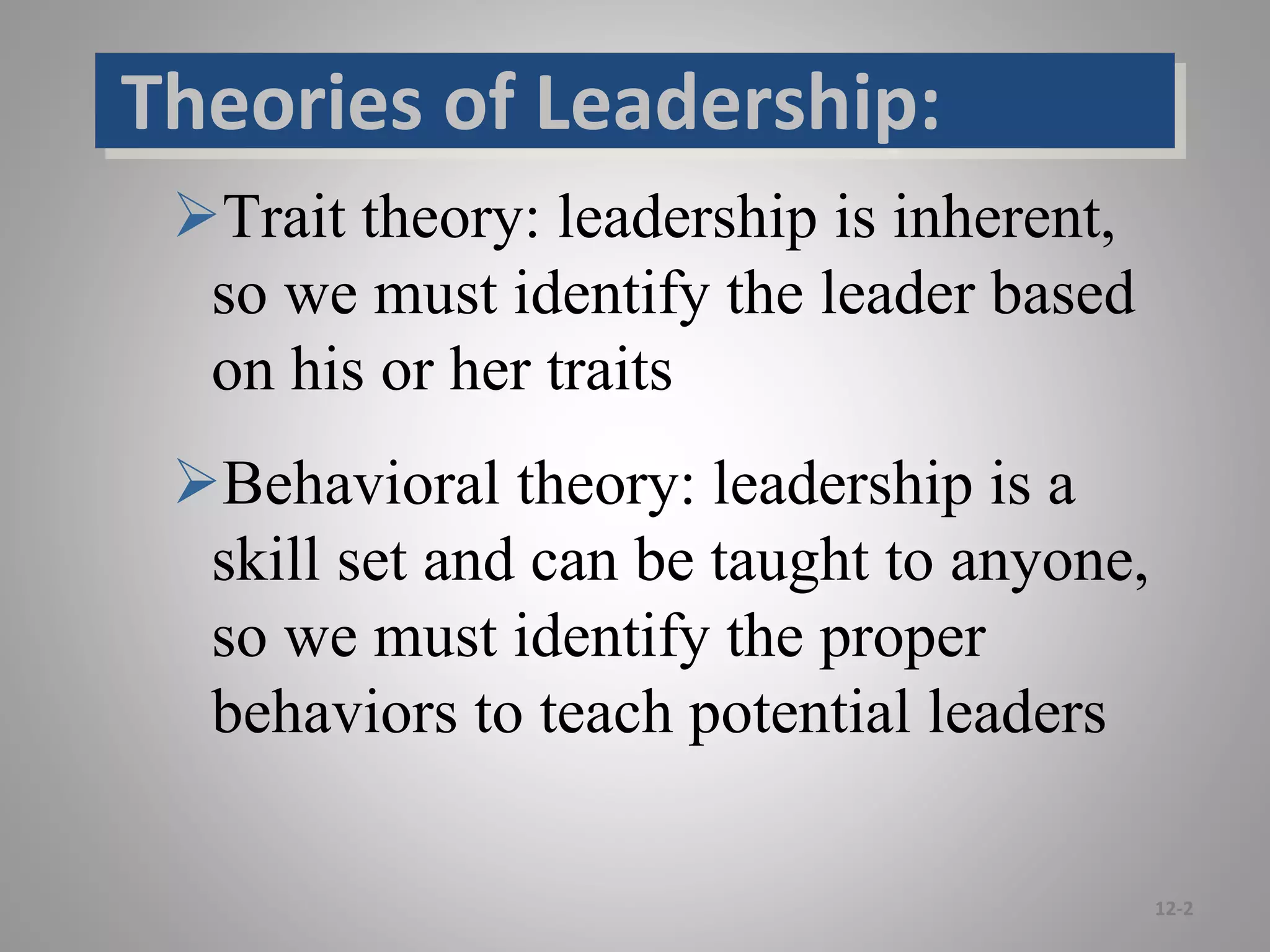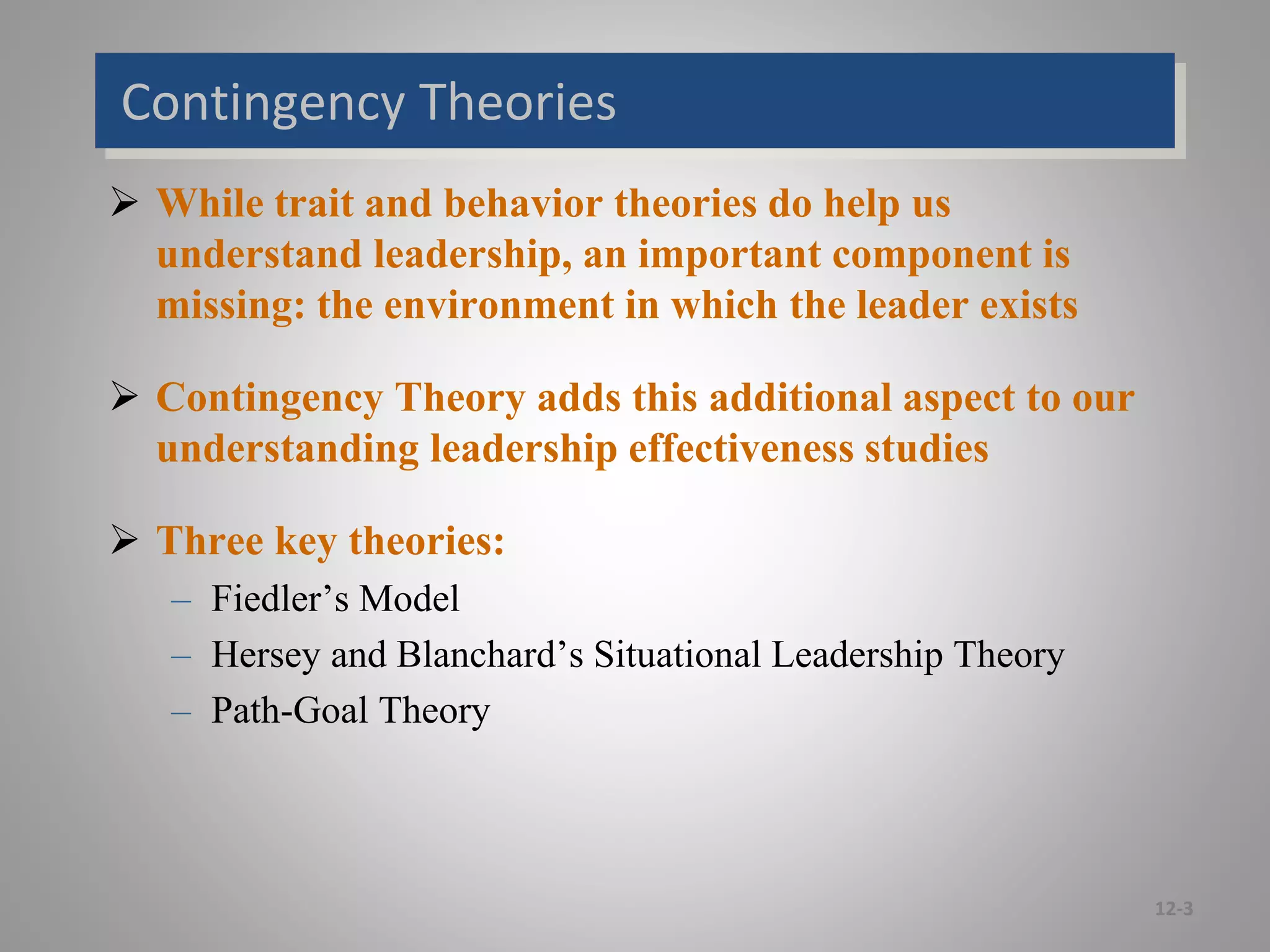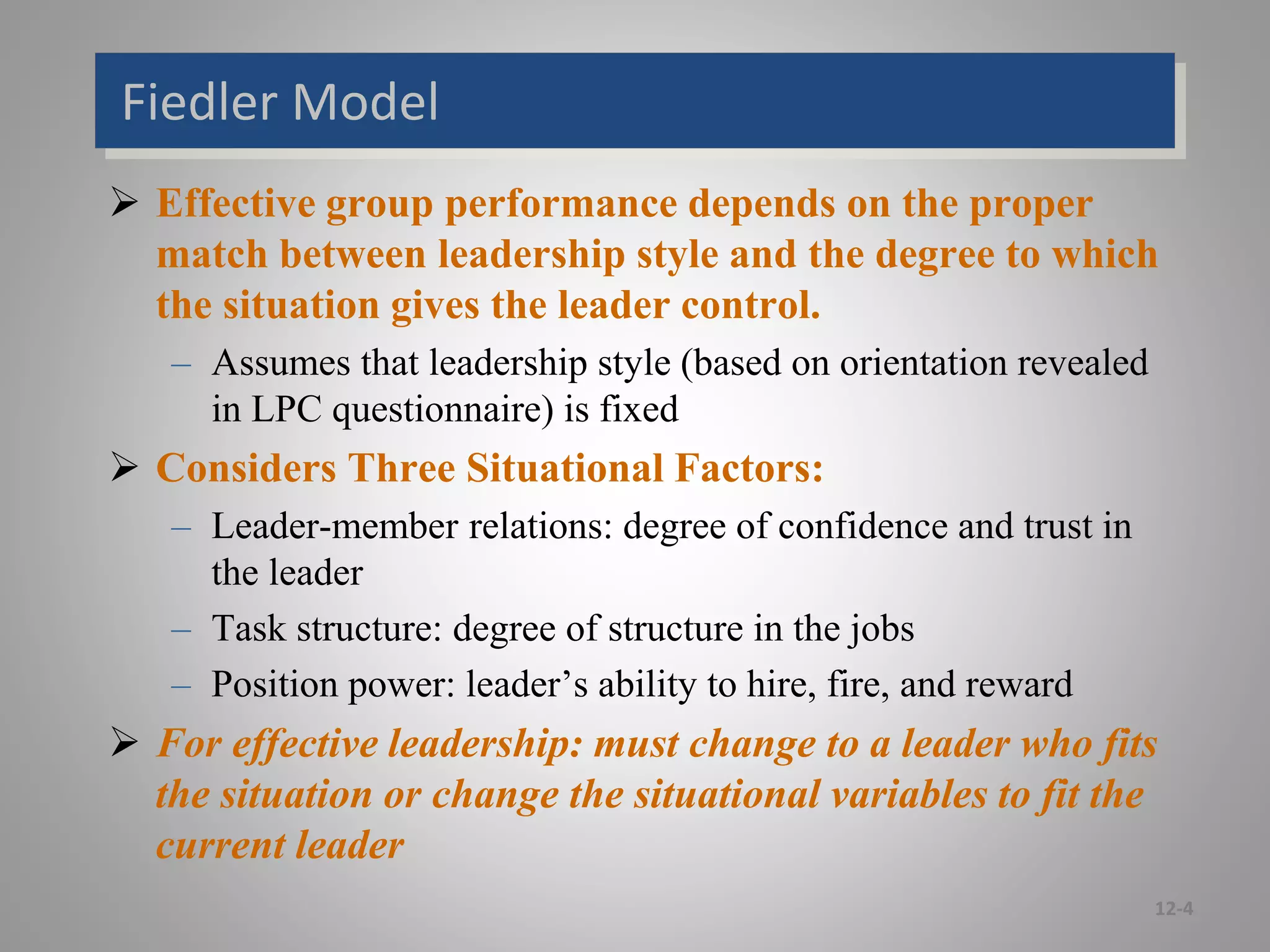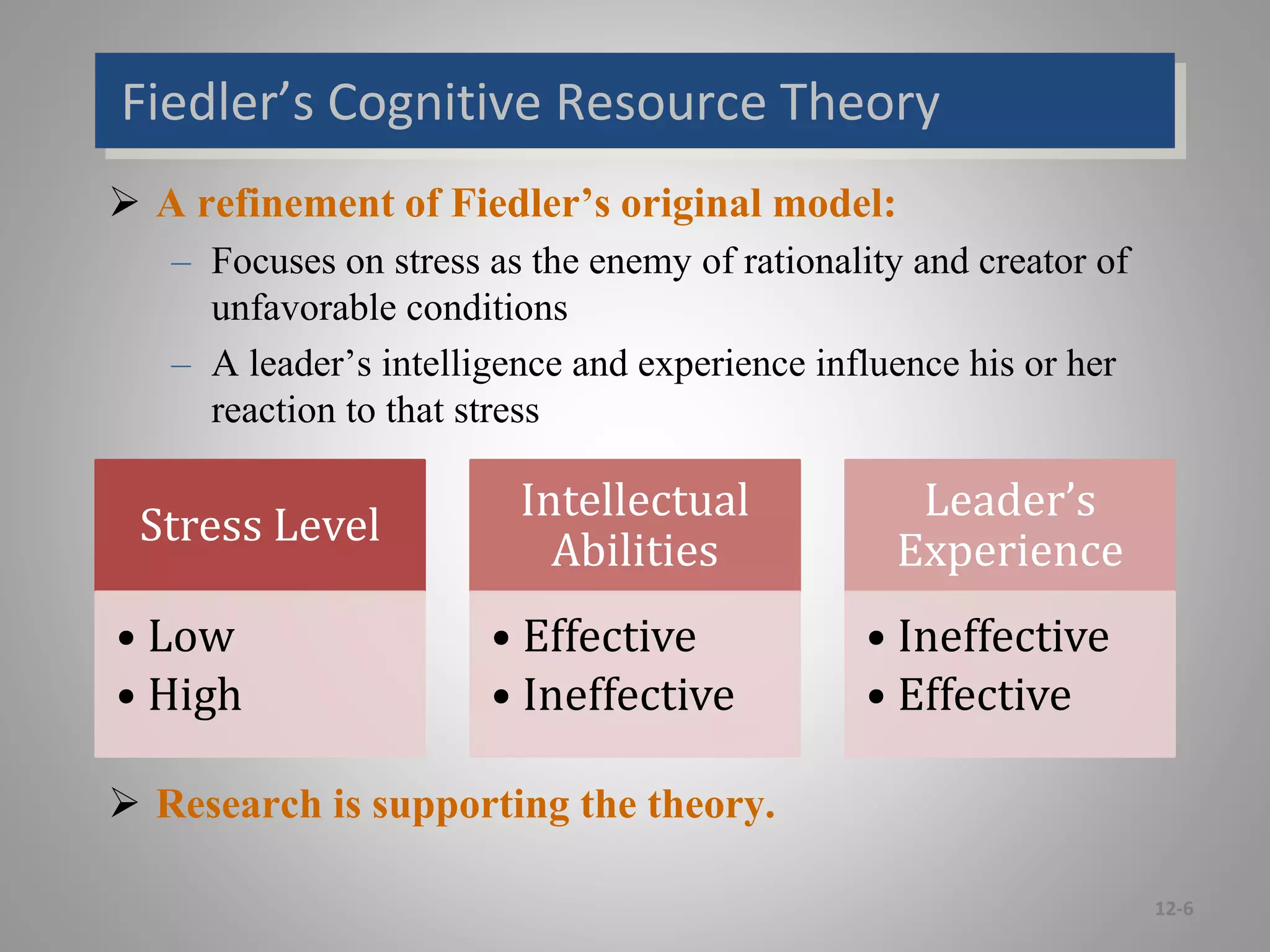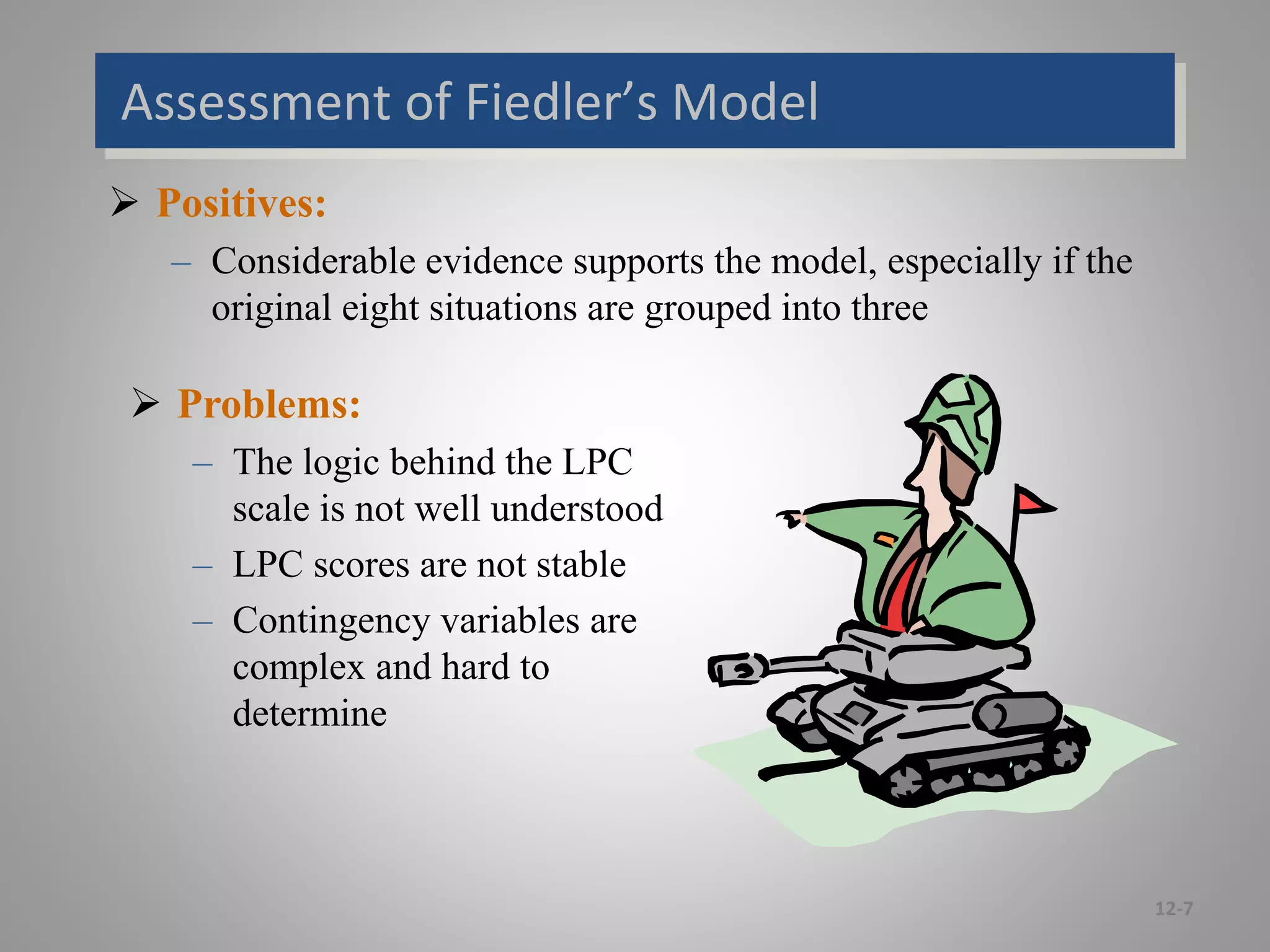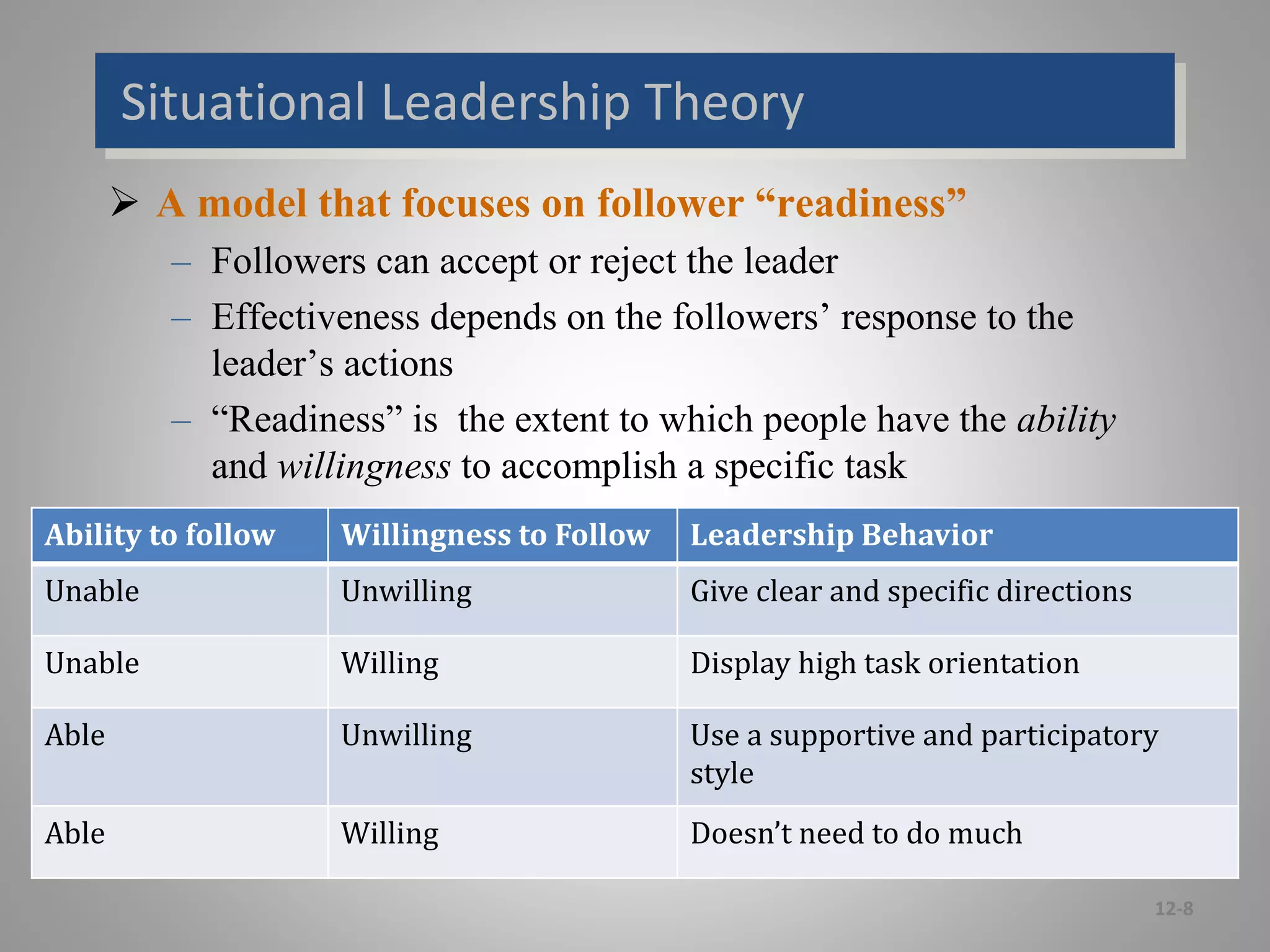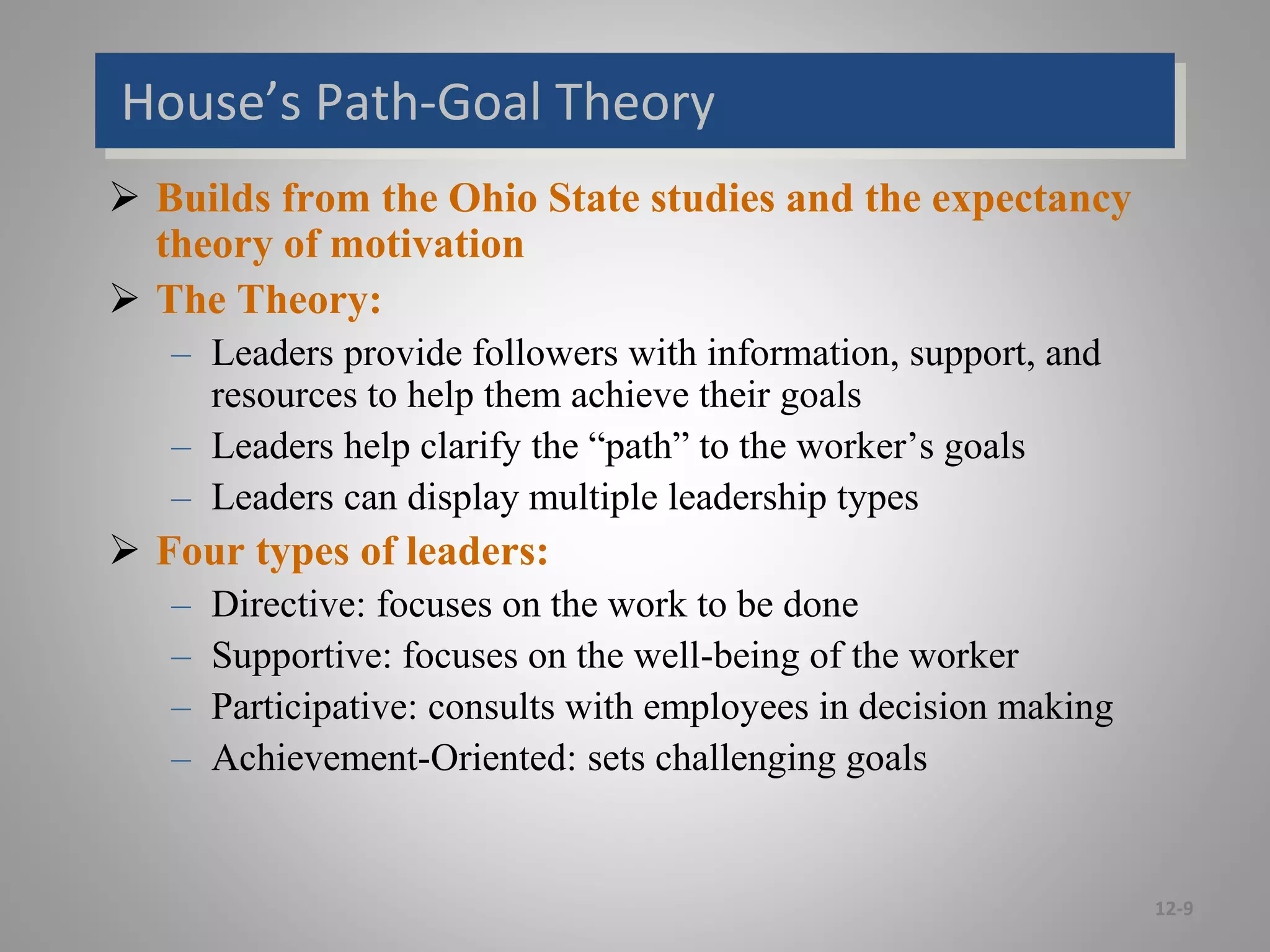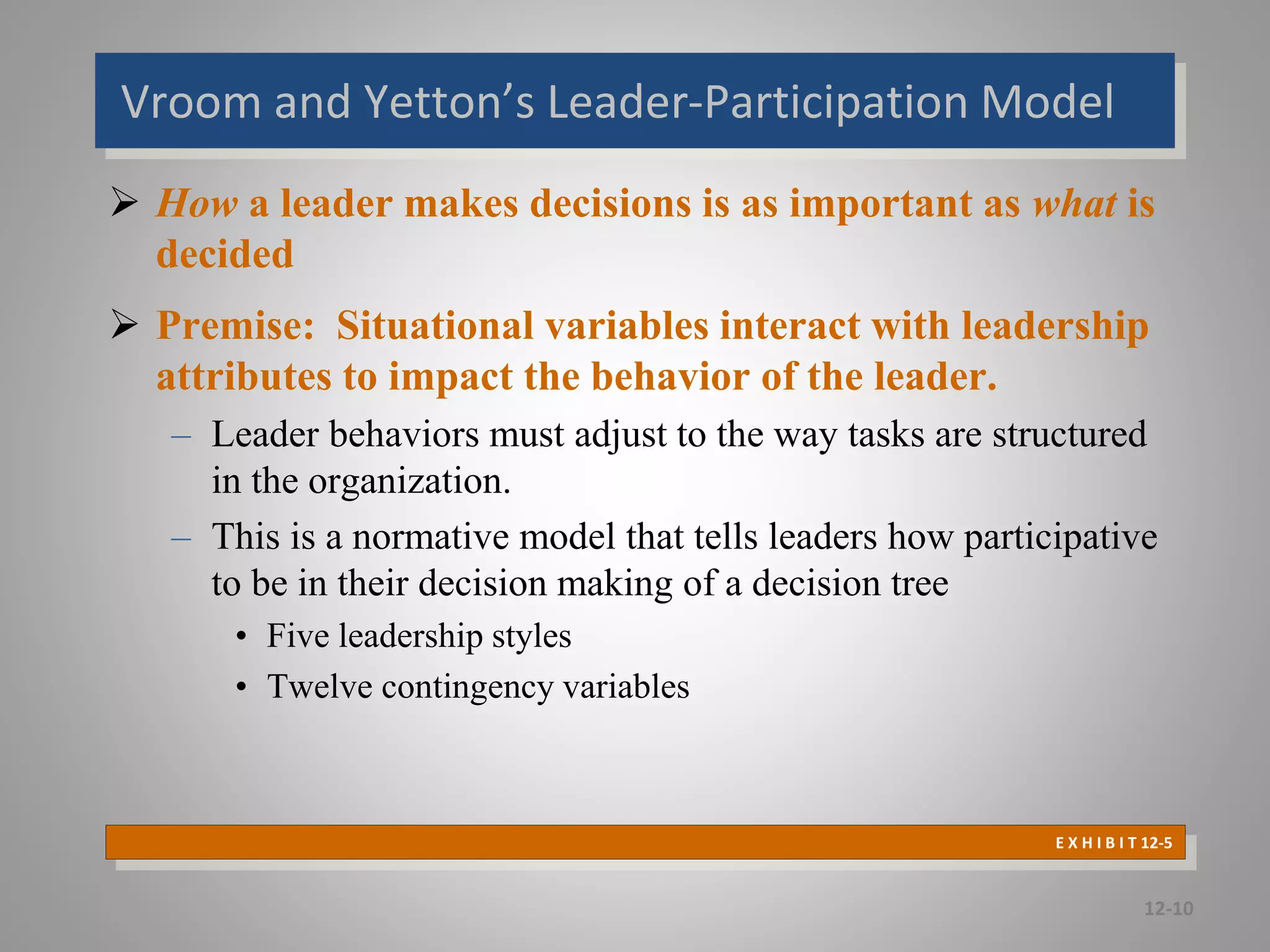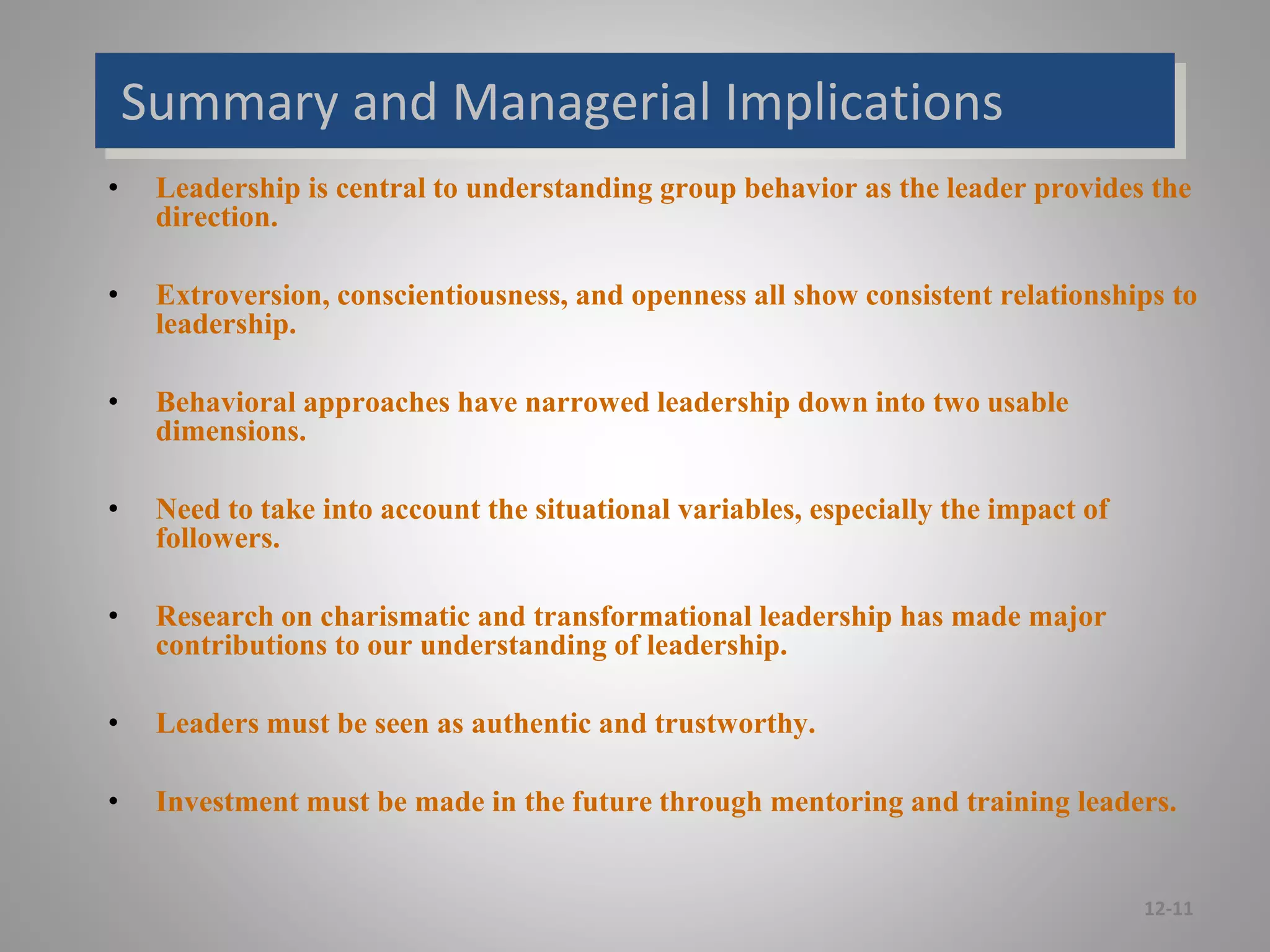The document discusses various leadership theories, focusing on contingency theory which emphasizes the importance of situational factors in leadership effectiveness. It outlines Fiedler's model, situational leadership theory, and path-goal theory, highlighting the need to adapt leadership styles based on followers' readiness and environmental conditions. The conclusion stresses the significance of leadership in group dynamics and the necessity for leaders to be authentic and trustworthy while investing in future leadership development.


